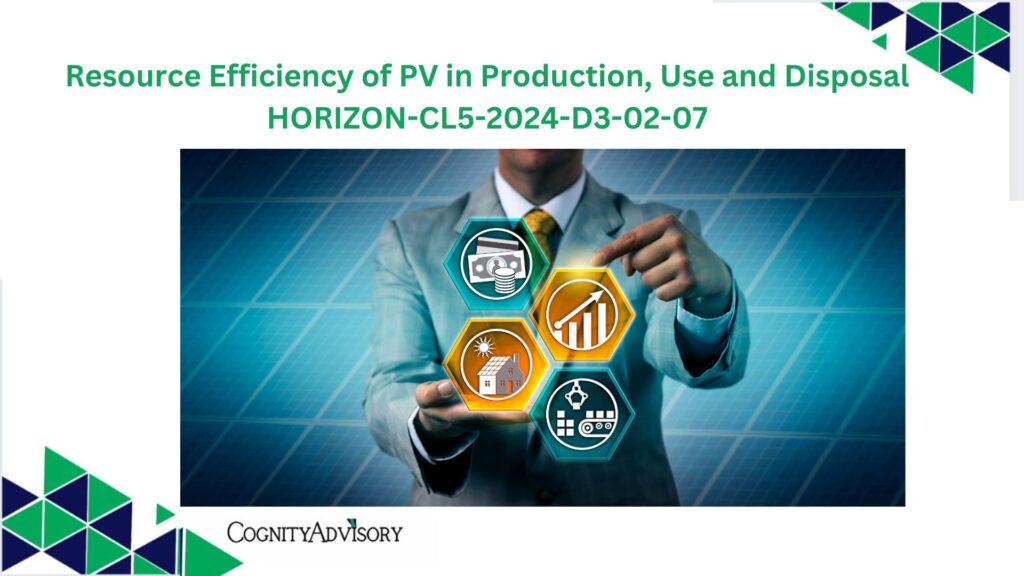HORIZON-CL5-2024-D3-02-07
General information
Programme
Horizon Europe (HORIZON)Budget overview
Call
Sustainable, secure and competitive energy supply (HORIZON-CL5-2024-D3-02)
Type of action
HORIZON-CSA HORIZON Coordination and Support Actions
Type of MGA
HORIZON Lump Sum Grant [HORIZON-AG-LS]
Forthcoming
Deadline model
single-stage
Planned opening date
17 September 2024
Deadline date
04 February 2025 17:00:00 Brussels timeTopic description
ExpectedOutcome:
Photovoltaic power generation is pivotal in the transition to a clean energy system and the achievement of a climate-neutral economy. To this end, it is important to enhance its sustainability while creating wealth and additional employment opportunities in Europe.
Consequently, project results are expected to contribute to all of the following outcomes:
- Reduce the environmental footprint associated to PV technology deployment across all the phases of the system lifetime (production, transport, installation and end of life).
- Define design and processing guidelines to optimally address circularity of PV systems for one or several PV technologies (silicon, thin film, organic PV, perovskite PV, etc.).
Scope:
In order to identify the main areas of improvement for the environmental footprint and resource efficiency of PV, it is necessary to regard the technology’s entire lifecycle. Using Life Cycle Assessment (LCA), important knowledge can be gained as to which processes and materials contribute most to the overall environmental footprint. The lifecycle-thinking also aids in identifying key candidates to reduce the use of resources from the design phase. Although it seems self-explanatory that reduction/substitution or efficient use of critical materials lead to improved environmental impact, it is of course essential that these do not adversely affect the function of the technology.
For a renewable energy technology to be successful, it needs to have a strong net positive energy balance. This implies that the energy payback time of systems needs to be short, the carbon footprint needs to be reduced, the use of local materials to reduce transport costs in systems needs to be increased, the use of hazardous materials needs to be avoided, and systems and system components need to be designed in a way that encourages recycling and decreases material usage.
Modern eco-friendly technologies and long lasting, repairable products are required in combination with sound circular economy approaches to process the huge stock of valuable resources at the end of life.
International cooperation with the Mediterranean Region is encouraged.
